The ST31000640SS is the largest member of the Barracuda ES.2 series. With release in 2007, the ES.2’s would be Seagate’s final enterprise-grade units to hold the Barracuda series name, with the successors to these being the Constellation ES.3’s. At this point, Seagate were having a few problems with the 7200.11’s, which is a fairly infamous part of their history in this day and age. Unfortunately, earlier ES.2’s are plagued with similar firmware issues, requiring a firmware update to revision SN06/SN16. This issue only affected certain SATA models of the ES.2’s, so any SAS unit should be a relatively safe experience.
Fortunately, this unit is spared from a fateful demise unlike many others from the time and lives on, although not being perfect.
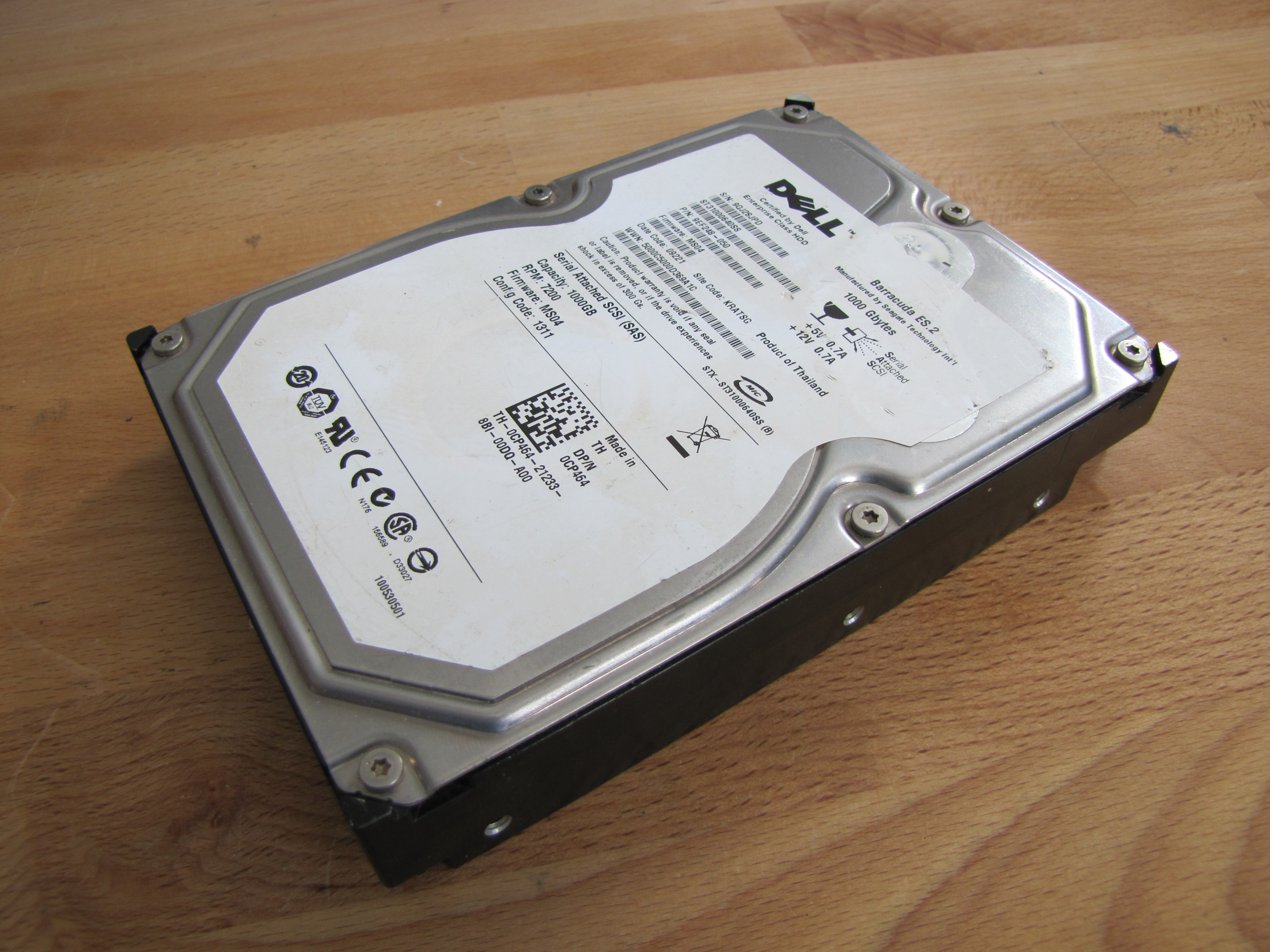
Drive Attributes ---------------------------------------- Seagate Barracuda ES.2 ST31000640SS ---------------------------------------- Capacity 1TB Mfc Date 2008-11-25 Format 3.5" Interface SAS Platters 4 Heads 8 Cache 16MB RPM 7200 Protocol SAS-1/300 Origin Thailand (ST) ----------------------------------------
As mentioned above, the ST31000640SS is the largest member of this series with four platters & eight heads. With a total capacity of 1TB, it sports 250GB per-platter.
Seagate released four different capacity levels in this series, being 250GB, 500GB, 750GB & 1TB. It should be easy to figure out how many platters each applicable unit has.
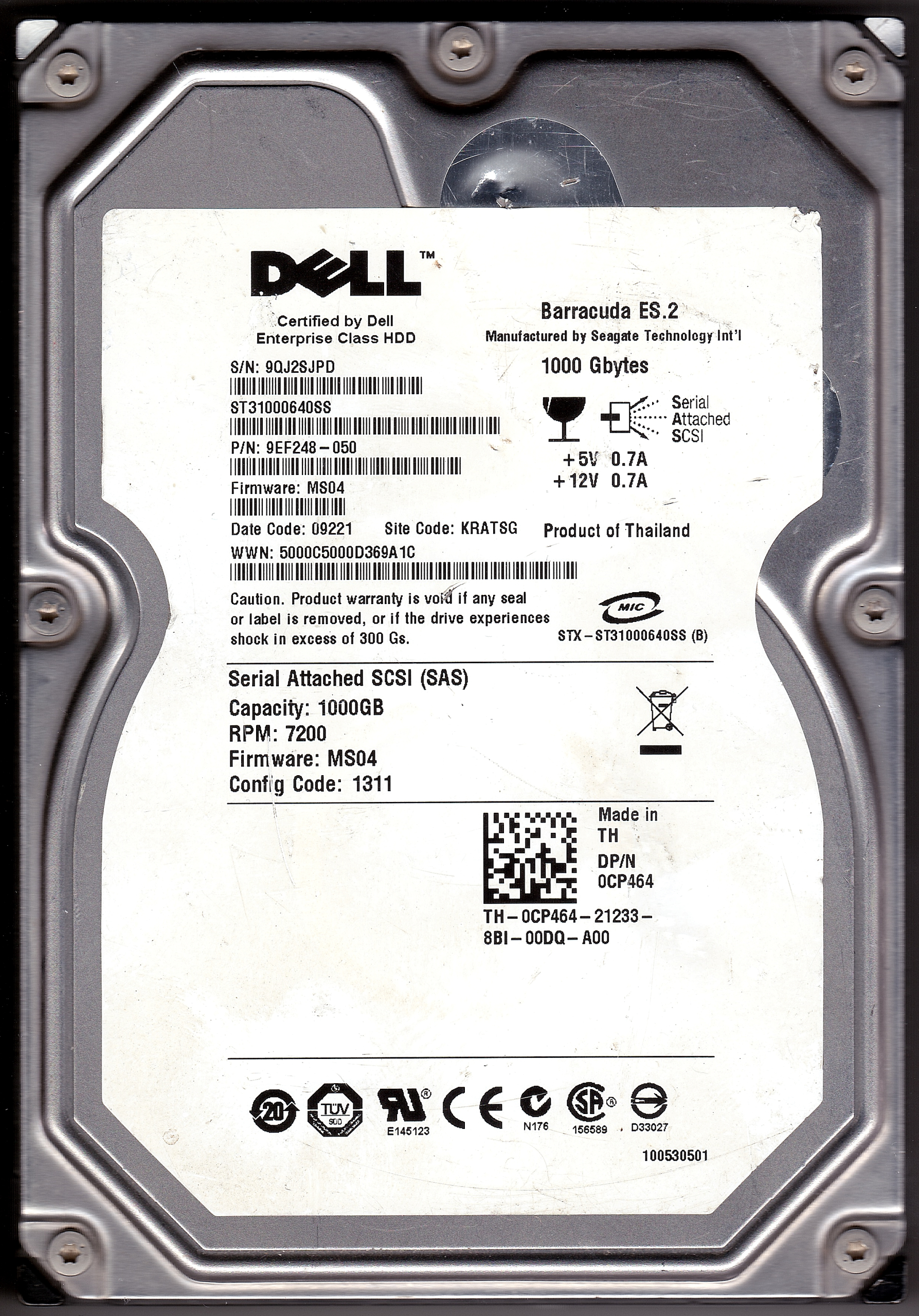
Dell notoriously plaster their logo on any drive entering their servers under official supply integration, which at least demonstrates the past life this drive served.
This particular unit was manufactured in late-2008, only a couple months prior to the release of the 7200.12’s.



The rear shows some light surface rust, alongside the usual slight yellowing on the PCB on the underside of the central microcontroller as a result of heat.

There’s only four primary IC’s on this board, being a touch simpler compared to most SAS enterprise drives (being a fork from a desktop architecture, after all). A few familiar faces in Marvell (control logic), Hynix (cache) and STMicroelectronics (spindle motor controller) are present. The heart of this drive is the Marvell 88i6062-BEH1.
Its 16MB of cache may seem measly in the current day, but for the period was certainly respectable.
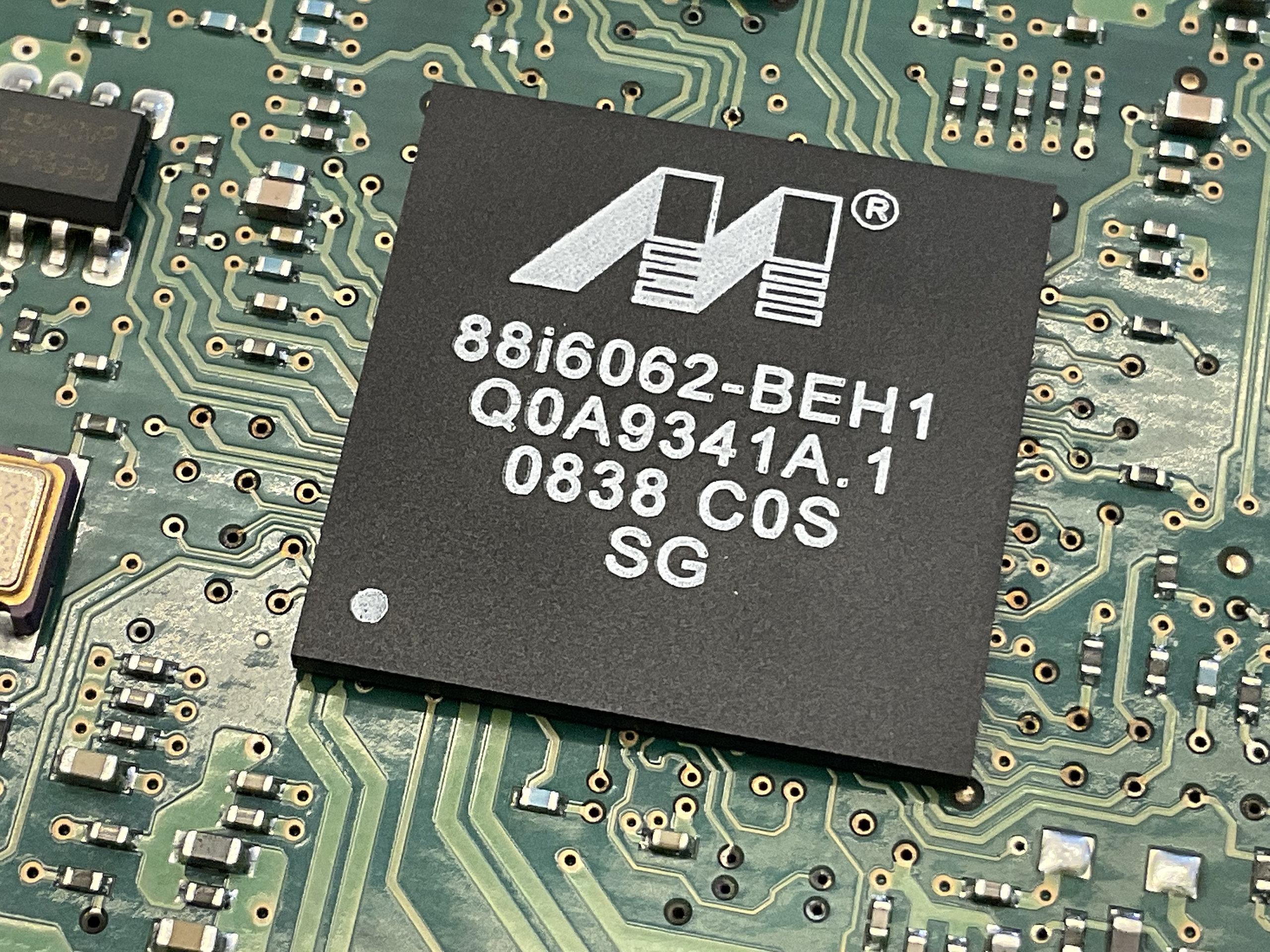




The slight surface corrosion mentioned above is a touch clearer when looking closely at the rear side of the PCB. As expected, the drive still functions just fine.

The base cast is quite plain, with no secrets revealed. Everything on this drive utilises pressure contacts, which while being the standard for desktop drives, is a feature that wasn’t always present on many enterprise SAS drives of the period (particularly those operating at 10k+ RPM, given the challenges involved with this feat).

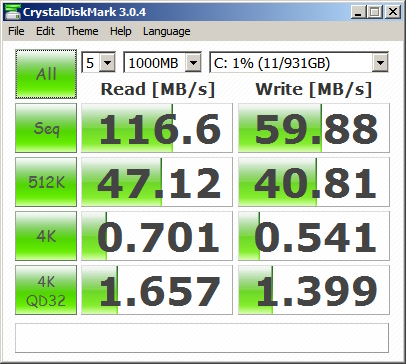
Performance is roughly what can be expected from a four-platter 1TB drive. It wasn’t the fastest enterprise-grade drive with its release, being more focused on capacity than speed. After all, 10k+ RPM drives always faltered in capacity limits, as a result of decreased platter size to compensate for higher speed necessitation.
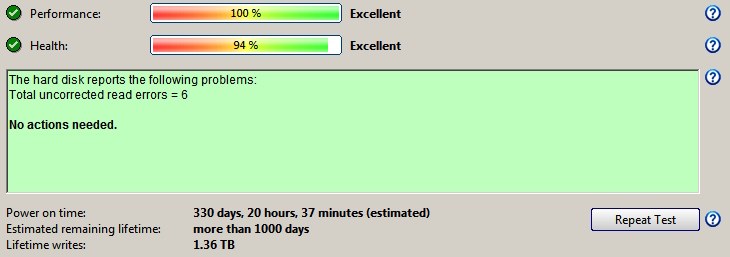
With not even a year of power on time, which is exceptionally low for such a unit, it’s generally in decent health. A few uncorrected read errors do place some doubt into the future for this example, but testing proves it isn’t degrading so it may have some life left it in after all.
This drive initially demonstrated some strange behaviour, stating to the LSI MegaRAID SAS 9264-8i card it was attached to that it was totally unresponsive & unwilling to initialise. Whether or not this is simply a Seagate drive of this era being somewhat quirky is up for question, but after a few initialisation attempts & restarts it did finally manage to configure correctly.
The ES.2’s aren’t that special, simply being based on the 7200.11’s where contact start-stop ruled the seas. However, they sport an interesting seek-test & are generally quite pleasant to listen to when in operation. Surely many still continue operating today.
If you’re curious to see the full health metrics available for this drive, feel free to check the report generated by HD Sentinel below:
Seagate Barracuda ES.2 ST31000640SS – Disk Health Report (.html, opens in new tab)
Feel free to check out the following additional official documentation from Seagate covering this drive series:
Seagate Barracuda ES.2 Product Overview (.pdf, opens in new tab)
Seagate Barracuda ES.2 Datasheet (.pdf. opens in new tab)
If you missed the video I made on this drive, you can find it here: